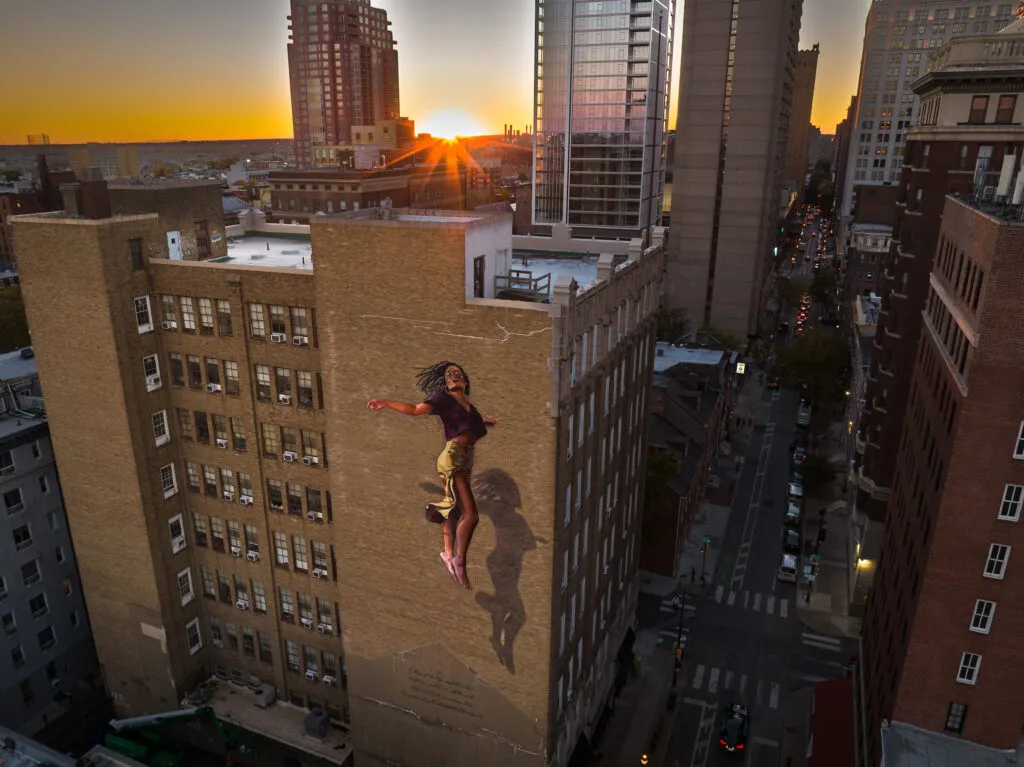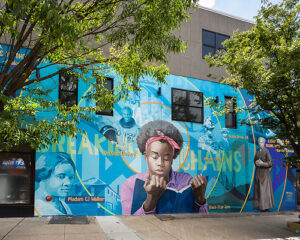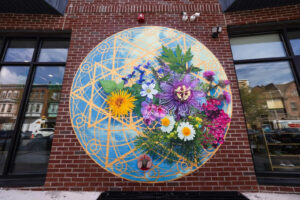A Bold Move to Preserve Philadelphia’s Public Art for Generations

In a city adorned with murals that tell the stories of resilience, cultural heritage, and artistic excellence, public art has long been a defining feature of Philadelphia’s landscape. However, for as much as these vibrant works are celebrated, their permanence has never been guaranteed. But just as art has the power to transform communities, so too can business decisions shape the future of public art—something one real estate development company has chosen to prove.
In an unprecedented partnership, Mural Arts Philadelphia and Spak Group, a local equitable real estate development company, have signed a groundbreaking Mural Preservation Easement agreement—ensuring that select murals on Spak Group properties remain protected, regardless of changes in ownership. This legally binding agreement, the first of its kind that is developer-initiated and not tied to any government requirement, sets a powerful precedent for how cities can preserve their public art while balancing the realities of property development.

For decades, Mural Arts has transformed walls into canvases that tell the city’s story, from tales of struggle and activism to celebrations of community pride. Yet, the fate of these murals has often been at the mercy of property transactions, building renovations, and shifting priorities. Now, through this new easement, Mural Arts is granted enforceable rights to ensure that murals such as Breaking Chains by Gabe Tiberino and KC White, Wild Medicine by Kala Hagopian, Flight by Tatyana Fazlalizadeh, and more to come are safeguarded indefinitely.
A Standard for Responsible Property Ownership

The terms of the easement are clear: property owners, including any future buyers, cannot remove or alter murals without Mural Arts’ explicit consent—except in cases of essential building maintenance or urgent safety concerns. If removal does become necessary, property owners must fund the reinstallation or contribute a tax-deductible financial donation to Mural Arts, ensuring that the value of the mural is preserved in a meaningful way.
Ryan Spak, Principal and Founder of Spak Group, sees this agreement as more than just a business decision. “Public art has the power to shape communities, create economic benefits, and contribute to cultural identity,” Spak said. “However, murals are often vulnerable to removal without compensation to the arts or the community. By implementing this Mural Preservation Easement—the first of its kind—we are ensuring these artworks remain part of the city’s fabric for generations.”
The significance of this moment cannot be overstated. Murals are not just decorations; they are historical markers, cultural beacons, and symbols of community investment. They provide a sense of place and continuity in an ever-changing urban environment. By formalizing a legal framework for their protection, this easement signals to developers and city planners that public art is not disposable.
A Scalable Model for Other Cities

Jane Golden, Executive Director of Mural Arts Philadelphia, views this agreement as a national model for mural preservation. “Spak Group’s commitment to protecting Philadelphia’s rich cultural and artistic legacy sets a precedent for responsible property ownership,” Golden stated. “This partnership establishes a scalable model for other developers to follow, ensuring that murals remain a permanent part of Philadelphia’s landscape.”
The agreement also grants Mural Arts the right to access properties for mural maintenance, while property owners remain responsible for general building upkeep. If a mural requires restoration, Mural Arts has the option—but not the obligation—to step in.
Legal experts say this kind of agreement is a game-changer for urban art preservation. By ensuring that future property transactions, mortgages, and financing arrangements do not override the easement, Mural Arts retains the ability to enforce protections, even through legal action if necessary.
What’s Next for Mural Preservation?
 With this easement in place, Mural Arts and Spak Group are paving the way for similar agreements across the city and potentially nationwide. It also raises the question: Should mural preservation become a standard practice for all new developments incorporating public art? The answer, according to advocates, is a resounding yes.
With this easement in place, Mural Arts and Spak Group are paving the way for similar agreements across the city and potentially nationwide. It also raises the question: Should mural preservation become a standard practice for all new developments incorporating public art? The answer, according to advocates, is a resounding yes.
As Philadelphia continues to evolve, so too must its approach to cultural preservation. This partnership is not just about protecting paint on a wall—it’s about honoring the voices, stories, and artistic contributions that make this city unique. And now, thanks to this landmark agreement, some of those stories will be told for generations to come.